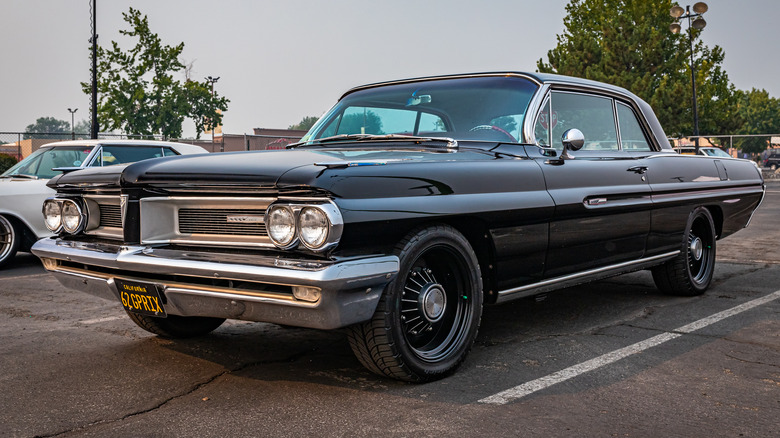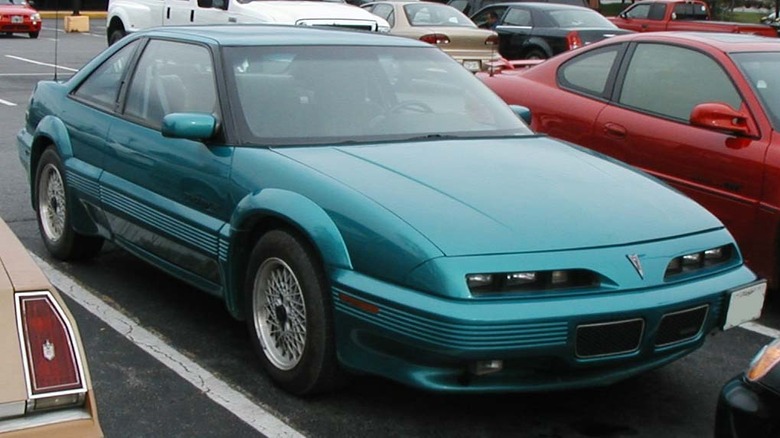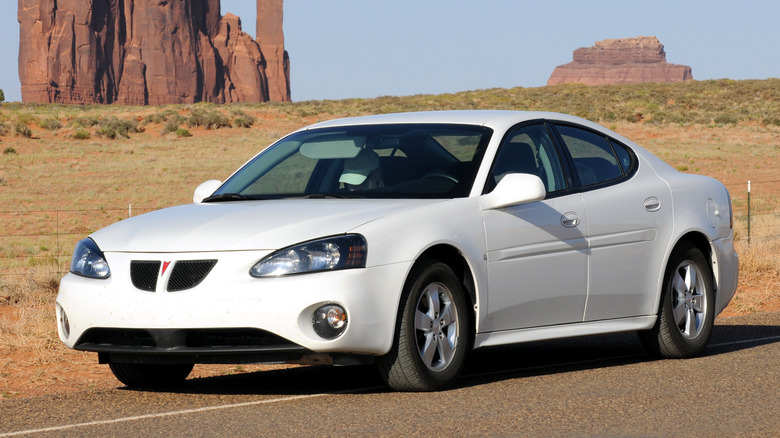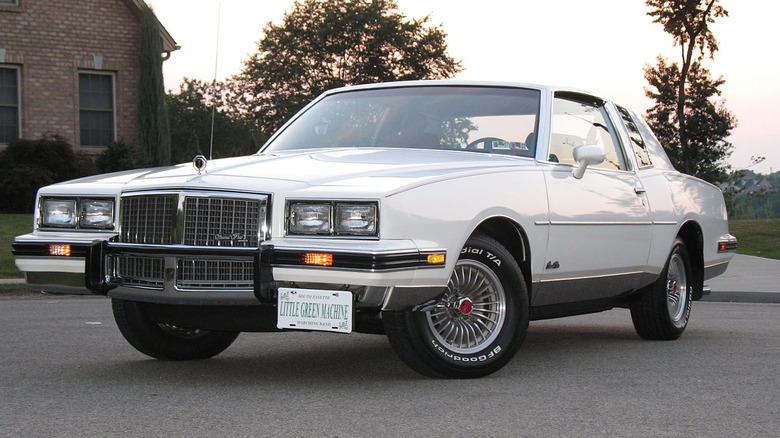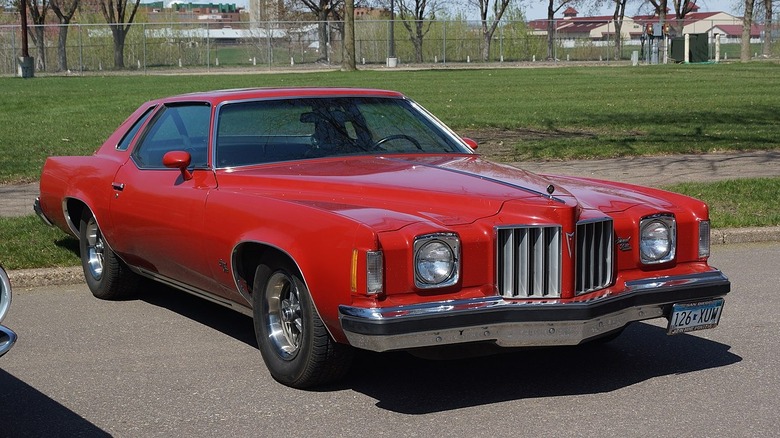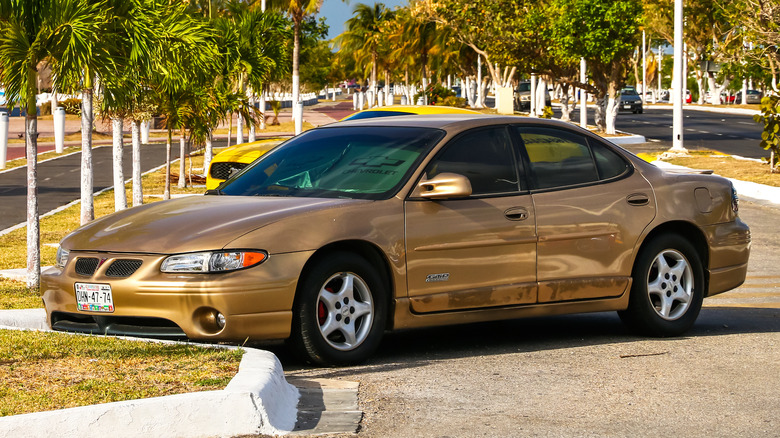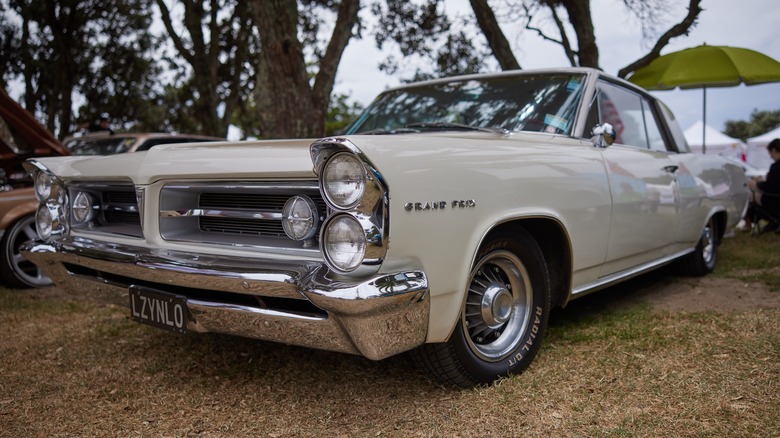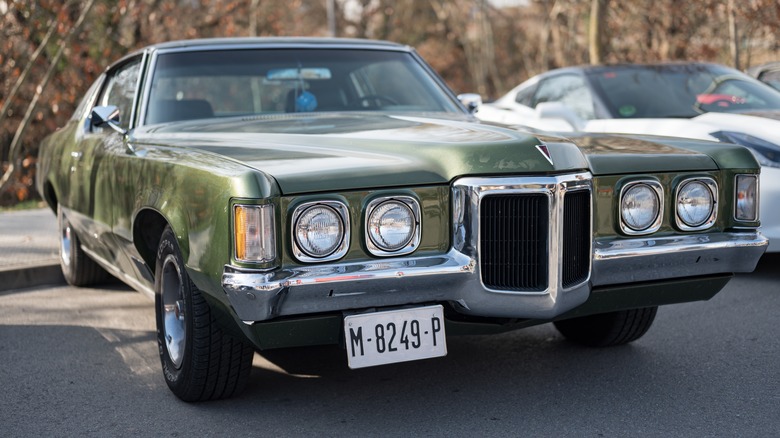Every Generation Pontiac Grand Prix, Ranked Worst To Best Based On Resale Value
Produced from the early '60s right through to the late '00s, the Grand Prix evolved many times throughout its production run. In its initial form, it served as Pontiac's luxury-oriented coupe, albeit one that could be optioned with a high-performance engine if its buyer desired. These muscle Grand Prix variants are arguably underappreciated, and don't get as much attention from collectors as the likes of the iconic GTO. Over the years, it was also sold as a sedan with varying degrees of both sportiness and luxury, as buyer tastes and GM's priorities continued to fluctuate.
Early Grand Prix models are generally considered to be the most desirable among collectors, although there were a number of special editions launched with later generations that have proven to be just as sought after in the years since the Grand Prix's demise. To rank each generation of the car from least to most valuable in terms of current resale price, we've used data from Classic.com's listings database. Each car is ranked with regard to its Classic.com Market Benchmark, which calculates an average value for each generation based on market data from recent auction records and dealership listings.
All figures are accurate as of the time of writing.
5th Generation Grand Prix – $10,206
The fifth-generation Pontiac Grand Prix was built between the 1988 and 1996 model years, with the car sporting several key changes compared to older models. It moved to GM's W-body platform, and became the first front-wheel drive Grand Prix to be offered. The Grand Prix had already lost its reputation for sportiness long before this point, but the launch of this new generation confirmed that the car was evolving to be less sporty than ever, at least in performance terms.
It was slightly more adventurous in its styling and in its tech offerings than previous generations, with its on-board computer and head-up display being notable additions. The top-spec GXP also looked cooler and gained a slight power boost over other variants. However, that couldn't compensate for the lackluster V6 under the hood of lower-spec models, and although its sales figures were reasonable for the era, the fifth-generation Grand Prix has not remained in demand with collectors today. Classic.com values the generation at $10,206 on average, with that valuation propped up by several high-priced, low-mileage examples recently appearing for sale. For non-pristine examples, resale values are notably lower.
[Featured image by IFCAR via Wikimedia Commons | Cropped and scaled | Public Domain]
7th Generation Grand Prix – $11,759
Although it was arguably a step up from the previous model, by the time the final generation of the Grand Prix was launched for the 2004 model year, the writing was already on the wall for the nameplate. Nonetheless, Pontiac attempted to see the Grand Prix out in style, unveiling the V8-powered GXP in 2005. It was the first Grand Prix to feature a V8 engine since the late '80s, but like most GM products of the era, it suffered from several flaws.
Perhaps the most obvious one in retrospect is that the 303 horsepower LS4 V8 engine generated a significant amount of understeer when fitted into the Grand Prix's front-wheel drive platform. That meant that, while it was fast in a straight line, the GXP's handling couldn't compete with the best sporty sedans in its segment. For the first time, the seventh generation was also only available in sedan form, with the coupe version axed after the sixth-generation model.
The seventh generation was a valiant effort at regenerating Pontiac's sporty image, considering the limited resources that the brand had to draw from, but few were surprised when it was axed in 2008 amid GM's worsening financial situation. Average resale values haven't changed dramatically for a few years now, with Classic.com estimating that collector-spec examples of the car will fetch around $11,759. Like the previous generation, it's worth noting that higher mileage examples in less clean condition can be picked up for much less.
4th Generation Grand Prix – $13,176
Like most American cars of its era, the fourth-generation Grand Prix that debuted in 1978 was smaller than the outgoing model. It also lost its standard V8 engine as changing buyer tastes dictated that smaller, more efficient mills were the order of the day. A 3.8-liter V6 engine was standard, although buyers still wanting a more powerful model could still stump up a little extra for an optional V8. In California, a 5.0-liter Chevy V8 was offered, while in all other states, a 4.9-liter Pontiac V8 sat under the hood.
Production of the fourth-generation Grand Prix continued until 1987 when the market changed once again. All following Grand Prix models were front-wheel drive, with the fourth generation the last to send its power to the rear. Perhaps that's one reason why resale values have remained higher than most newer generations, with clear examples of the model valued at $13,176 by Classic.com.
[Featured image by Thebandit82089 via Wikimedia Commons | Cropped and scaled | CC BY-SA 4.0]
3rd Generation Grand Prix – $18,593
The third-generation Pontiac Grand Prix was sold throughout one of the most significant periods of change in the American automotive industry. It launched for the 1973 model year, just as restrictive federal regulations were starting to really hit carmakers, affecting both the power and weight of the car. With larger bumpers and emissions control systems being unavoidable additions to the car, Pontiac restyled the Grand Prix to give buyers a reason to keep frequenting its showrooms. The car's look was a grander, more visually intricate one. Importantly for today's collectors, every example still came with a V8 engine under the hood.
It's not uncommon to find collectors who purchased their third-generation Grand Prix straight from the dealership and kept it in pristine condition for decades. Eventually, these pristine examples come up for sale as owners can no longer take care of them, and they've helped push the average selling price of the third-generation car well above that of the fourth-generation.
According to Classic.com's Market Benchmark, a clean example today is valued at $18,593. However, the lowest-mileage examples that have appeared for sale, sometimes with as little as 1,000 miles on the clock, have sold for around double that amount.
[Featured image by Greg Gjerdingen via Wikimedia Commons | Cropped and scaled | CC BY 2.0]
6th Generation Grand Prix – $22,610
Described by GM as "an expressive, sporty midsize car," the sixth-generation Grand Prix was sold between 1997 and 2003. Much like the previous generation, it was based on GM's W-body platform and was front-wheel drive. However, it took its sporty credentials a little more seriously than before, with top-spec versions offering a 240 horsepower V6 engine. There was no V8 option for this generation.
A review of the 1997 model Grand Prix by MotorTrend noted that the car felt more rigid when driving over rough ground, with minimal body roll present and plenty of grunt in top-spec variants. However, it was still far from an exceptional sports sedan, which might seem unusual given how high it has placed in the resale value rankings. With a Market Benchmark of $22,610 according to Classic.com, the sixth generation beats not only all other front-wheel drive Grand Prix generations but also two rear-wheel drive generations.
This can largely be explained by the recent sale of several special editions of the car driving the average notably higher. In particular, the sale of a one-off 1999 Grand Prix GTP for $105,000 in March 2023 single-handedly caused a spike in average sale value, with most collector-spec examples of the car listed for under $20,000. Clean, average mileage examples of the car can be found for under $10,000, making the Market Benchmark value, in this case, not entirely representative of what most buyers are likely to pay.
1st Generation Grand Prix – $29,445
The original Grand Prix remains highly sought after by collectors. It launched in 1962 and catered to buyers who wanted a sporty coupe with an extra touch of luxury compared to Pontiac's other offerings. It could be optioned with a variety of engines ranging from mildly quick to tire-meltingly rapid, with the top-spec variant churning out 370 horsepower. It was very similar to the Catalina, with only some exterior styling tweaks and interior trim differentiating the two models. Eventually, the popularity of the Grand Prix ended up pushing out the Catalina, replacing it within the brand's lineup.
While the rarest and most pristine examples of the first-generation Grand Prix can fetch close to six figures at auction, most examples trade for far less. The Classic.com Market Benchmark estimates an average of $29,445 for surviving examples, with condition, mileage, and spec playing just as large a part in a car's value as its generation. While project examples might sell for just a few thousand dollars, collectors can expect most clean examples to fetch at least $20,000 at auction.
2nd Generation Grand Prix – $32,481
Offering more of what made the original Grand Prix a sales hit, the second generation debuted in 1969. The car's styling was significantly overhauled for the new generation, with John Z. DeLorean, the driving force behind the original, again taking the lead on the project. A choice of three engines were available, all V8s, with the most powerful 455 engine offering 370 horsepower.
The generation was relatively short-lived, and would be replaced after the 1972 model year by the smaller, heavier, and less powerful third-generation Grand Prix. By that time, new regulations had already limited what manufacturers could offer under the hood, while the oil crisis of the following years would further turn buyer tastes away from large, gas-guzzling cars. The second-generation Grand Prix was the last of its kind, reflected in the car's resale values today.
The Classic.com Market Benchmark pegs the car's average value at $32,481, making it the most valuable Grand Prix generation by a small margin. However, much like the first-generation car, factors other than the car's age will greatly affect its value. Exceptionally clean examples of the car have sold for six-figure sums, but most sell for far less. Well-maintained examples can still be picked up for less than $20,000, despite an uptick in examples selling for over $50,000 in recent years.
